

Statistical Communiqué of the People's Republic of China on the 2023 National Economic and Social Development[1]
Chapter I General Outlook
National Bureau of Statistics of China
February 29, 2024
The year 2023 is the first year to fully implement the guiding principles of the 20th National Congress of the Communist Party of China (CPC) and a year for economic recovery and development following three years of COVID-19 prevention and control. Faced with complex and grave international environment as well as arduous tasks to advance reform, promote development and maintain stability at home, under the strong leadership of the CPC Central Committee with Comrade Xi Jinping at its core, all regions and departments took Xi Jinping Thought on Socialism with Chinese Characteristics for a New Era as the guideline, fully implemented the guiding principles of the 20th CPC National Congress and the Second Plenary Session of the 20th CPC Central Committee, followed the decisions and arrangements made by the CPC Central Committee and the State Council, adhered to the general working guideline of making progress while maintaining stability, fully and faithfully applied the new development philosophy on all fronts, accelerated efforts to foster a new pattern of development, strove to promote high-quality development, comprehensively deepened reform and opening up, strengthened macro control, and redoubled efforts to expand domestic demand, optimize structure, boost confidence and prevent and defuse risks. As a result, the national economy witnessed the momentum of recovery. The high-quality development was pursued with solid steps, important advancement was achieved in the building of a modern industrial system, new breakthroughs were made in scientific and technological innovation, reform and opening-up was deepened, the foundation for security and development was consolidated, people’s wellbeing was strongly and effectively guaranteed, social harmony and stability was achieved, and solid strides were taken in building a modern socialist country in all respects.
I. General Outlook
According to preliminary estimation, the gross domestic product (GDP) [2] in 2023 was 126,058.2 billion yuan, up by 5.2 percent over the previous year. Of this total, the value added of the primary industry was 8,975.5 billion yuan, up by 4.1 percent over the previous year, that of the secondary industry was 48,258.9 billion yuan, up by 4.7 percent, and that of the tertiary industry was 68,823.8 billion yuan, up by 5.8 percent. The value added of the primary industry accounted for 7.1 percent of the GDP; that of the secondary industry accounted for 38.3 percent; and that of the tertiary industry accounted for 54.6 percent. The contribution of the final consumption expenditure to GDP growth rate was up by 4.3 percentage points, that of the gross capital formation to GDP growth rate up by 1.5 percentage points and that of the net exports of goods and services to GDP growth rate down by 0.6 percentage points. By quarter, the GDP for the first quarter went up by 4.5 percent year on year, up by 6.3 percent for the second quarter, 4.9 percent for the third quarter and 5.2 percent for the fourth quarter. The per capita GDP in 2023 was 89,358 yuan, up by 5.4 percent over the previous year. The gross national income[3] in 2023 was 125,129.7 billion yuan, up by 5.6 percent over the previous year. The overall labor productivity[4] was 161,615 yuan per person, up by 5.7 percent over the previous year.
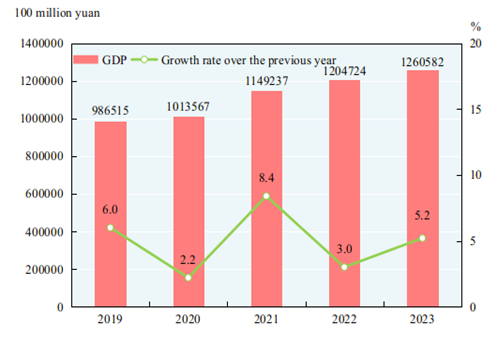
Figure 1: Gross Domestic Product and Growth Rates 2019-2023
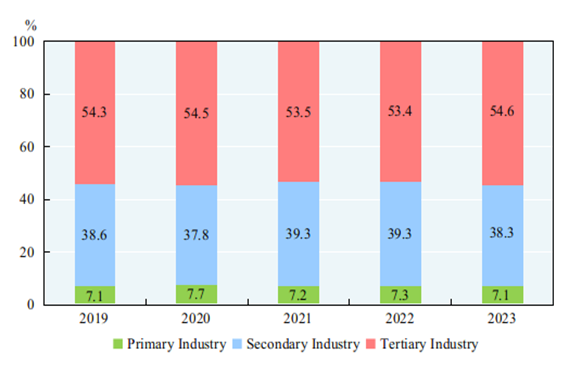
Figure 2: Shares of the Three Industries’ Value Added in GDP 2019-2023
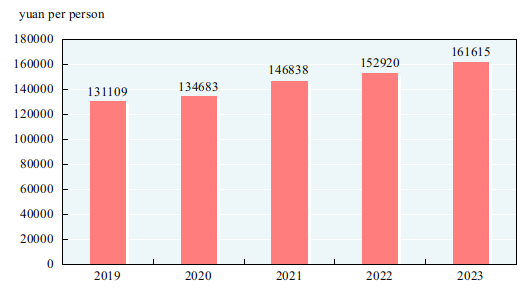
Figure 3: The Overall Labor Productivity 2019-2023
By the end of 2023, the total number of national population[5] reached 1,409.67 million, a decrease of 2.08 million over that at the end of 2022. Of this total, urban permanent residents numbered 932.67 million. There were 9.02 million births in 2023 with a crude birth rate of 6.39 per thousand; and there were 11.10 million deaths with a crude death rate of 7.87 per thousand. The natural growth rate was -1.48 per thousand.
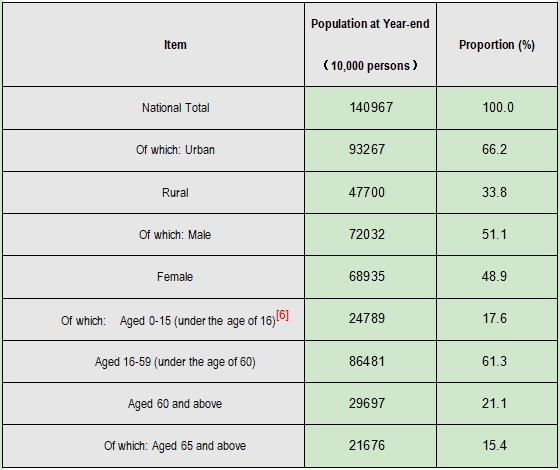
Table 1: Population and Its Composition by the End of 2023
At the end of 2023, the number of employed people in China was 740.41 million, and that in urban areas was 470.32 million, accounting for 63.5 percent of the total employed people. The newly increased employed people in urban areas[7] numbered 12.44 million in 2023, 0.38 million more than that of the previous year. The urban surveyed unemployment rate in 2023 averaged 5.2 percent. The urban surveyed unemployment rate at the year end was 5.1 percent. The total number of migrant workers[8] was 297.53 million, up by 0.6 percent over that of 2022. Specifically, the number of migrant workers who left their hometowns and worked in other places was 176.58 million, up by 2.7 percent, and those who worked in their own localities reached 120.95 million, down by 2.2 percent.
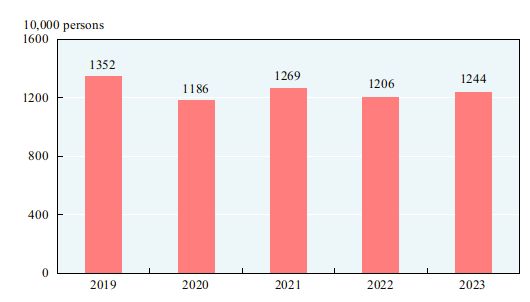
Figure 4:Newly Increased Employed People in Urban Areas 2019-2023
The consumer prices in 2023 went up by 0.2 percent over the previous year. The producer prices for industrial products went down by 3.0 percent and the purchasing prices for industrial producers down by 3.6 percent. The producer prices for farm products[9] dropped by 2.3 percent. In December, out of the 70 large and medium-sized cities, 20 cities experienced a year-on-year rise in sales prices of new commercial residential buildings, 2 cities maintained the same and 48 cities experienced a decline; one city experienced a year-on-year rise in sales prices of second-hand housing, and 69 cities experienced a decline.
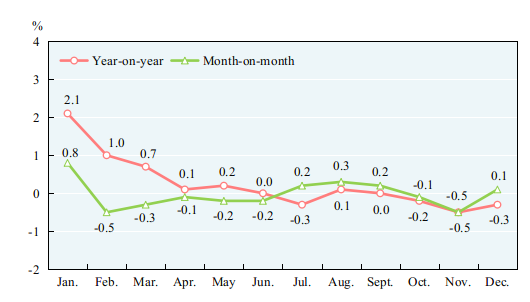
Figure 5:Monthly Changes of Consumer Prices in 2023
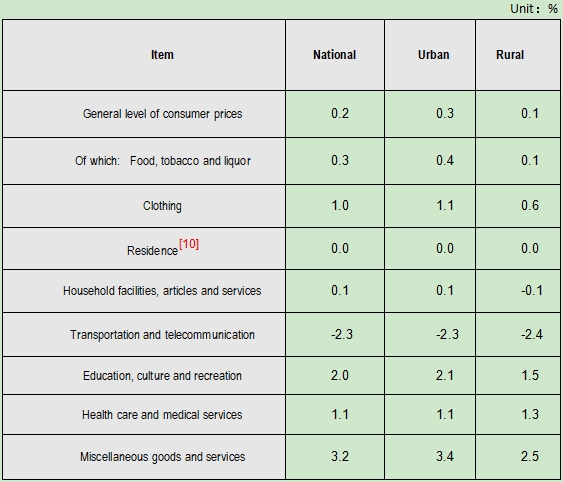
Table 2: Changes of Consumer Prices in 2023
At the end of 2023, China’s foreign exchange reserves reached 3,238.0 billion US dollars, an increase of 110.3 billion US dollars compared with that at the end of 2022. The average exchange rate of the year was 7.0467 RMB to 1 USD dollar, depreciated by 4.5 percent over that of 2022.
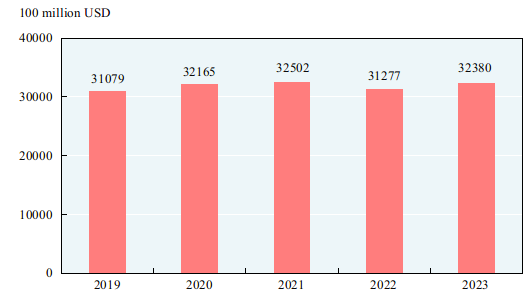
Figure 6:Year-end China's Foreign Exchange Reserves 2019-2023
New growth drivers witnessed robust development. Among the industries above the designated size[11], the value added of the manufacture of equipment[12] was up by 6.8 percent over the previous year, accounting for 33.6 percent of that of all industrial enterprises above the designated size. The value added of the high technology manufacturing industry[13] increased by 2.7 percent, accounting for 15.7 percent of that of all industrial enterprises above the designated size. In 2023, the output of new energy vehicles reached 9.443 million, up by 30.3 percent over the previous year; that of solar cells (photovoltaic cells) was 0.54 billion kilowatts, up by 54.0 percent; that of service robots reached 7.833 million, up by 23.3 percent; and that of 3D printing devices totaled 2.789 million, up by 36.2 percent. Among the service enterprises above the designated size[14], the business revenue of the strategic emerging service industries[15] went up by 7.7 percent compared with the previous year. In 2023, the investment in high technology industries[16] increased by 10.3 percent over the previous year and the investment in technology transformation of manufacturing[17] grew by 3.8 percent. In 2023, the e-commerce transactions[18] reached 46,827.3 billion yuan, up by 9.4 percent over the previous year. The online retail sales[19] in 2023 reached 15,426.4 billion yuan, up by 11.0 percent over the previous year. In 2023, the number of newly established business entities was 32.73 million, with 0.027 million enterprises newly established per day on average.
Steady progress was made in the integrated development of urban and rural areas and coordinated regional development. By the end of 2023, the urbanization rate of permanent residents reached 66.16 percent, 0.94 percentage points higher than that at the end of 2022. By region[20], in 2023, the gross domestic product in the eastern areas was 65,208.4 billion yuan, an increase of 5.4 percent over the previous year; the central areas, 26,989.8 billion yuan, up by 4.9 percent; the western areas, 26,932.5 billion yuan, up by 5.5 percent; and the northeastern areas, 5,962.4 billion yuan, up by 4.8 percent. In 2023, the gross domestic product in Beijing-Tianjin-Hebei Region reached 10,444.2 billion yuan, up by 5.1 percent over the previous year; that in the Yangtze River Economic Belt, 58,427.4 billion yuan, up by 5.5 percent; and that in the Yangtze River Delta, 30,504.5 billion yuan, up by 5.7 percent. Major regional strategies such as the construction of Guangdong-Hong Kong-Macao Greater Bay Areas, and the ecological protection and high-quality development of the Yellow River Basin were further advanced.
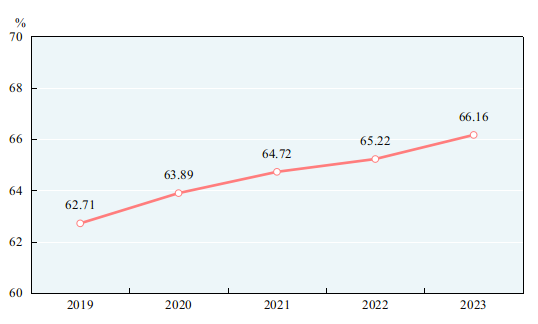
Figure 7:Year-end Urbanization Rates of Permanent Residents 2019-2023
Green and low-carbon transformation was further promoted. The national carbon dioxide emissions per 10,000 yuan worth of GDP[21] in 2023 remained the same as that of the previous year. In 2023, the electricity generated by clean energy such as hydropower, nuclear power, wind power and solar power was 3,190.6 billion kilowatts-hours, up by 7.8 percent over the previous year. Of the monitored 339 cities at prefecture level and above, 59.9 percent reached the air quality standard and 40.1 percent failed. Of the 3,641 sections under the national monitoring program for surface water, 89.4 percent were of fairly clean water quality (Grade I to III), 8.4 percent were Grade IV, 1.5 percent were Grade V and 0.7 percent were worse than Grade V national standard.
Notes:
[1] All figures in this Communiqué are preliminary statistics. Statistics in this Communiqué do not include Hong Kong SAR, Macao SAR and Taiwan Province. Due to the rounding-off reasons, the subentries may not add up to the aggregate totals.
[2] Gross domestic product (GDP), value added of the three and related industries, regional GDP, per capita GDP and gross national income (GNI) as quoted in this Communiqué are calculated at current prices whereas their growth rates are at constant prices.
[3] Gross national income, also known as gross national product, refers to the total primary distribution of the income created by all the resident units of a country (or a region) during a certain period of time. It equals to gross domestic product plus the net primary distribution of income from abroad.
[4] The overall labor productivity refers to the ratio between the GDP (at 2020 constant prices) and the total number of persons employed.
[5] The national population refers to the population of the 31 provinces, autonomous regions and municipalities directly under the central government and servicemen of the Chinese mainland, excluding residents of Hong Kong, Macao and Taiwan and foreigners living in the 31 provinces, autonomous regions and municipalities directly under the central government.
[6] By the end of 2023, the population aged 0 to 14 (under the age of 15) was 230.63 million and that aged 15 to 59 (under the age of 60) was 882.07 million.
[7] The number of newly increased employed people in urban areas equals the number of cumulative new employment minus the number of natural attrition in urban areas during the reporting period.
[8] The number of migrant workers includes those who are employed outside their villages and towns for more than six months in the year and those who are engaged in non-agricultural work in their villages and towns for more than six months in the year.
[9] The producer prices for farm products refer to the prices of farm products sold firsthand by producers.
[10] The prices for residence include prices for rent, maintenance and management, water, electricity and fuel, and services for owner-occupied housing etc.
[11] The growth rates and rate changes of relevant indicators of the industries above the designated size in 2023 were calculated on a comparable basis due to adjustments of survey coverage in the statistical survey programs, statistical law enforcement and removal of duplicated data.
[12] Manufacture of equipment includes manufacture of metal products, general purpose equipment, special purpose equipment, automobiles, railway, ship, aerospace and other transport equipment, electrical machinery and apparatus, computers, communication and other electric equipment and measuring instrument and machinery.
[13] High technology manufacturing industry includes manufacture of medicine, manufacture of aerospace vehicle and equipment, manufacture of electronic and communication equipment, manufacture of computers and office equipment, manufacture of medical equipment, manufacture of measuring instrument and equipment and manufacture of optical and photographic equipment.
[14] Service enterprises above the designated size refer to legal entities of transport, storage and post, information transmission, software and information technology services, water conservancy, environment and public facilities management, and health with annual business revenue of 20 million yuan and above; legal entities of real estate (excluding real estate development and operation), leasing and business services, scientific research and technology services and education with annual business revenue of 10 million yuan and above; and legal entities of services to households, repair and other services and culture, sports and entertainment, and social services with annual business revenue of 5 million and above. The growth rates of financial indicators of service enterprises above the designated size in 2023 were calculated on a comparable basis.
[15] Strategic emerging service industries refer to the related service sectors of information technology of new generation, manufacture of high-end equipment, new materials, biotech, new energy vehicles, new energy, energy-saving and environmental protection and digital creative industries, and service industries related to new technology, innovation and entrepreneurship.
[16] Investment in high technology industries refers to investment in six high technology manufacturing industries, including the manufacture of medicine and manufacture of aerospace vehicle and equipment, and nine high technology service industries, including information service and e-commerce service.
[17] The investment in technology transformation of manufacturing refers to the investment by manufacturing enterprises in transformation of existing facilities, techniques and production services by adopting new technologies, techniques, devices and materials.
[18] E-commerce transactions refer to the transactions of goods and services realized through e-commerce trading platforms (including self-built and third-party platforms), including transactions with entities and individuals. The growth rate of 2023 was calculated on a comparable basis.
[19] Online retail sales refer to the retail sales of goods and services realized through internet trading platforms (online platforms mainly in trading physical commodities, including self-built websites and third-party platforms). The growth rate of 2023 was calculated on a comparable basis.
[20] The eastern areas include 10 provinces and municipalities: Beijing, Tianjin, Hebei, Shanghai, Jiangsu, Zhejiang, Fujian, Shandong, Guangdong and Hainan; the central areas cover 6 provinces: Shanxi, Anhui, Jiangxi, Henan, Hubei and Hunan; the western areas include 12 provinces, autonomous regions and municipalities: Inner Mongolia, Guangxi, Chongqing, Sichuan, Guizhou, Yunnan, Tibet, Shaanxi, Gansu, Qinghai, Ningxia and Xinjiang; the northeastern areas include 3 provinces: Liaoning, Jilin and Heilongjiang.
[21] The carbon dioxide emissions per 10,000 yuan worth of GDP was calculated at 2020 constant prices.
Source: <https://www.stats.gov.cn/english/PressRelease/202402/t20240228_1947918.html>